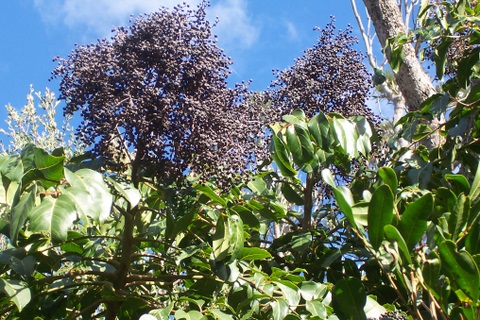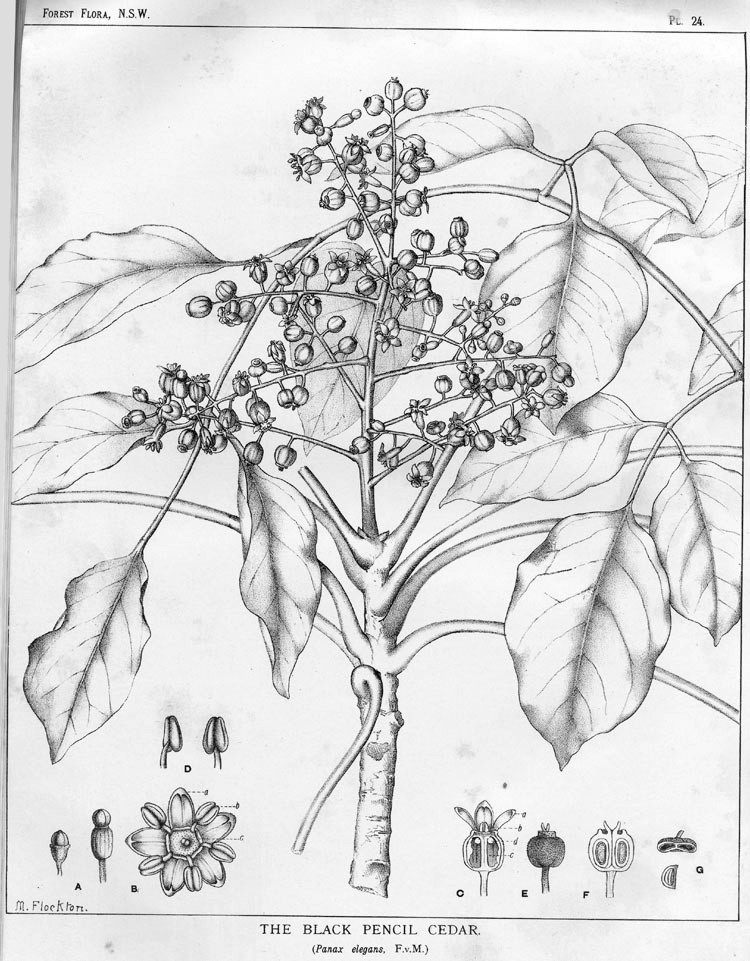Polyscias Elegans on:
[Wikipedia]
[Google]
[Amazon]

 ''Polyscias elegans'', known as the celery wood, is a rainforest tree of eastern
''Polyscias elegans'', known as the celery wood, is a rainforest tree of eastern
(other publication details, included in citation)
''Polyscias elegans'' at NSW Flora Online
Retrieved 20 June 2009 {{Taxonbar, from=Q7226926 elegans Apiales of Australia Trees of Australia Flora of New South Wales Flora of Queensland Plants described in 1894 Taxa named by Ferdinand von Mueller Taxa named by Charles Moore

 ''Polyscias elegans'', known as the celery wood, is a rainforest tree of eastern
''Polyscias elegans'', known as the celery wood, is a rainforest tree of eastern Australia
Australia, officially the Commonwealth of Australia, is a sovereign country comprising the mainland of the Australian continent, the island of Tasmania, and numerous smaller islands. With an area of , Australia is the largest country by ...
. It occurs in a variety of different rainforest types, from fertile basaltic soils, to sand dunes and less fertile sedimentary soils. The range of natural distribution is from Jervis Bay
Jervis Bay () is a oceanic bay and village on the south coast of New South Wales, Australia, said to possess the whitest sand in the world.
A area of land around the southern headland of the bay is a territory of the Commonwealth of Australia ...
(35° S) in southern New South Wales
)
, nickname =
, image_map = New South Wales in Australia.svg
, map_caption = Location of New South Wales in AustraliaCoordinates:
, subdivision_type = Country
, subdivision_name = Australia
, established_title = Before federation
, es ...
to Thursday Island
Thursday Island, colloquially known as TI, or in the Kawrareg dialect, Waiben or Waibene, is an island of the Torres Strait Islands, an archipelago of at least 274 small islands in the Torres Strait. TI is located approximately north of Cape ...
(10° S), north of the Australian
Australian(s) may refer to:
Australia
* Australia, a country
* Australians, citizens of the Commonwealth of Australia
** European Australians
** Anglo-Celtic Australians, Australians descended principally from British colonists
** Aboriginal A ...
continent. Other common names include black pencil cedar and silver basswood. ''Polyscias elegans'' is useful to bush regenerators as a nursery tree, which provides shade for longer-lived young trees underneath. ''Polyscias elegans'' is also known as Celery wood, Mowbulan whitewood, Silver basswood and White sycamore.http://www.plantnames.unimelb.edu.au/Sorting/Polyscias.html Sorting Polyscias names
Description
It is a fast-growing medium-sized tree with an attractive palm-like or umbrella-shaped crown. Up to 30 meters tall and a trunk diameter of 75 cm. The trunk is mostly straight, unbuttressed and cylindrical, smooth-barked on young trees but fissured, scaly and rough-barked on larger trees. Leaves are large, pinnate or bi-pinnate with almost opposite leaflets, often in threes. Leaflets ovate in shape, with a point, 5 to 13 cm long. Leaf veins noticeable on both sides, net veins visible below. Purple flowers form on a terminalpanicle
A panicle is a much-branched inflorescence. (softcover ). Some authors distinguish it from a compound spike inflorescence, by requiring that the flowers (and fruit) be pedicellate (having a single stem per flower). The branches of a panicle are of ...
, arranged in a series of raceme
A raceme ( or ) or racemoid is an unbranched, indeterminate type of inflorescence bearing flowers having short floral stalks along the shoots that bear the flowers. The oldest flowers grow close to the base and new flowers are produced as the s ...
s in the months of February to April. However, flowers can form at other times. The fruit is a drupe
In botany, a drupe (or stone fruit) is an indehiscent fruit in which an outer fleshy part ( exocarp, or skin, and mesocarp, or flesh) surrounds a single shell (the ''pit'', ''stone'', or ''pyrena'') of hardened endocarp with a seed (''kernel ...
; brown or purplish black in colour, 5 to 7 mm wide. Inside the drupe are two cells, containing one seed each, 5 mm long. Seed is fertile for regeneration from the droppings of the pied currawong.
The fruit is eaten by a large variety of birds, including brown cuckoo dove, Australasian figbird, green catbird
The green catbird (''Ailuroedus crassirostris'') is a species of bowerbird found in subtropical forests along the east coast of Australia, from southeastern Queensland to southern New South Wales. It is named after its distinctive call which soun ...
, Lewin's honeyeater, olive-backed oriole, pied currawong, paradise riflebird
The paradise riflebird (''Ptiloris paradisea'') is a passerine bird of the family Paradisaeidae. It is one of four riflebird species in the genus ''Ptiloris''. It is found in subtropical, temperate rainforests in eastern Australia. The species is ...
, rose crowned fruit dove, silvereye
The silvereye or wax-eye (''Zosterops lateralis'') is a very small omnivorous passerine bird of the south-west Pacific. In Australia and New Zealand its common name is sometimes white-eye, but this name is more commonly used to refer to all membe ...
, superb fruit dove
The superb fruit dove (''Ptilinopus superbus''), also known as the purple-crowned fruit dove (leading to easy confusion with the purple-capped fruit dove), is a medium-sized (22–24 cm long), colourful fruit-dove in the family Columbidae.
...
, topknot pigeon and wompoo fruit dove
The wompoo fruit dove (''Ptilinopus magnificus''), also known as wompoo pigeon, is one of the larger fruit doves native to New Guinea and eastern Australia.
Taxonomy and systematics
Subspecies
There are generally 7-8 recognised subspecies, ...
.
References
*(other publication details, included in citation)
''Polyscias elegans'' at NSW Flora Online
Retrieved 20 June 2009 {{Taxonbar, from=Q7226926 elegans Apiales of Australia Trees of Australia Flora of New South Wales Flora of Queensland Plants described in 1894 Taxa named by Ferdinand von Mueller Taxa named by Charles Moore